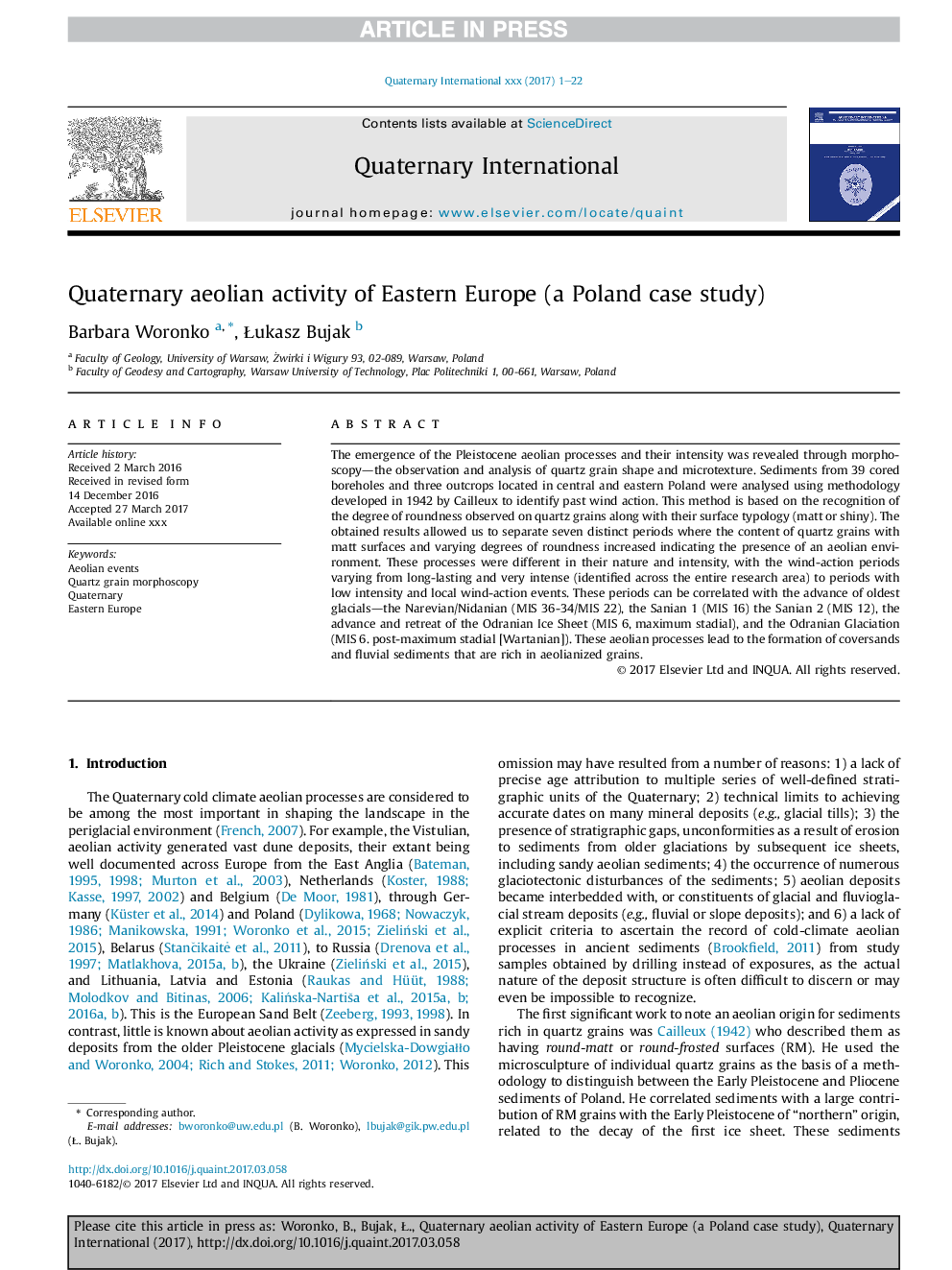| Article ID | Journal | Published Year | Pages | File Type |
|---|---|---|---|---|
| 7449486 | Quaternary International | 2018 | 22 Pages |
Abstract
The emergence of the Pleistocene aeolian processes and their intensity was revealed through morphoscopy-the observation and analysis of quartz grain shape and microtexture. Sediments from 39 cored boreholes and three outcrops located in central and eastern Poland were analysed using methodology developed in 1942 by Cailleux to identify past wind action. This method is based on the recognition of the degree of roundness observed on quartz grains along with their surface typology (matt or shiny). The obtained results allowed us to separate seven distinct periods where the content of quartz grains with matt surfaces and varying degrees of roundness increased indicating the presence of an aeolian environment. These processes were different in their nature and intensity, with the wind-action periods varying from long-lasting and very intense (identified across the entire research area) to periods with low intensity and local wind-action events. These periods can be correlated with the advance of oldest glacials-the Narevian/Nidanian (MIS 36-34/MIS 22), the Sanian 1 (MIS 16) the Sanian 2 (MIS 12), the advance and retreat of the Odranian Ice Sheet (MIS 6, maximum stadial), and the Odranian Glaciation (MIS 6. post-maximum stadial [Wartanian]). These aeolian processes lead to the formation of coversands and fluvial sediments that are rich in aeolianized grains.
Keywords
Related Topics
Physical Sciences and Engineering
Earth and Planetary Sciences
Geology
Authors
Barbara Woronko, Åukasz Bujak,
